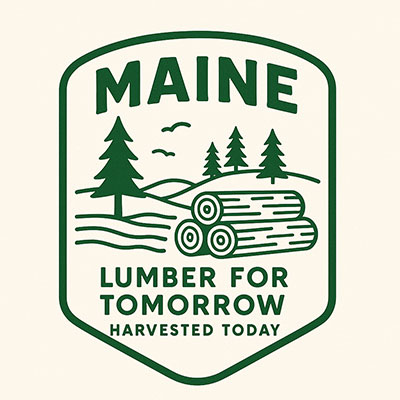Hey Folks,
We need new industries in Maine and to reinvent existing ones. Decades ago, Maine was a leader in lumber production, producing over 1 billion board feet a year; however, due to competition from subsidized industries in Canada, that number has shrunk to just 400 million. (Link). The folks I have spoken with in Northern Maine want these jobs back, and I have a plan to make it happen.
Today, a majority of the trees harvested in Maine get shipped to Canada to be milled, only to be shipped back to Maine for sale at a higher price. We should be milling and processing our own dimensional lumber here in Maine. Throughout Northern Maine, millions of acres of softwood forests are ready to be sustainably harvested and replanted using modern techniques that will leave the forest healthier for future generations.
If elected as Senator, I would take a transformative step to bring these jobs back by drafting bipartisan legislation to create a Strategic Lumber Reserve, with a location here in Maine.

What is a Strategic Lumber Reserve (SLR)?
A Strategic Lumber Reserve would comprise multiple facilities strategically located in the United States, near abundant forests, lumber mills, and rail transportation hubs. The basic function of the SLR would be to buy and store a 6-12 month supply of American-harvested & milled lumber when prices are low and supply is abundant; and sell it when the price is high.
Where would a Strategic Lumber Reserve be located in Maine?
Ideally somewhere between Millinocket and Bangor, but Brownville Junction would make a lot of sense as it is an intersection of freight rail transportation in Northern Maine.
Primary Economic Benefits of a Strategic Lumber Reserve in Maine:
- Constant demand for American lumber mills and harvesters would mean increased jobs year-round in Northern and Western Maine
- New housing construction & insurance costs would decrease as lumber prices become more stable and predictable.
Environmental Impact:
Much of the forest in Northern Maine was not harvested and replanted sustainably decades ago since it was last harvested. As a result, many of the forests are overgrown and not healthy. Additionally, in recent years, the spruce budworm has infested these forests and needs to be dealt with.
Biofuel Byproduct:
In addition to lumber, when the trees are harvested, a significant amount of the tree (slash/forest residue) is left on the forest floor to decompose.
We should harvest this slash to use as biofuels for energy production in Maine; a cheap & green alternative to natural gas.

